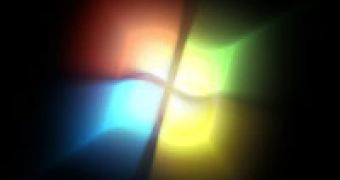Even when Windows 7 was still in development, early adopters already running the operating system agreed that it bested its predecessor in all aspects. However, Microsoft itself felt pretty confident early on during the building of Windows 7. Back in the first half of November 2009, the Redmond company demonstrated a boot time drag race between Windows Vista and Windows 7 pre-Beta Build 6801 Milestone 3. Windows 7 won, at a distance so to speak, and the rest is history. According to Microsoft, Aaron Dietrich, senior development lead on the Windows Client Performance team along with his group were responsible for making Windows 7 start-up faster than its predecessor.
Dietrich read the first positive review of the Windows 7 improved boot performance ahead of Windows 7 release. "It gave me a really good feeling," Dietrich recalled. "I thought, 'Wow, it's not just that we're on the right path, but we're really making a change in perception for reviewers and the general public here.' It's not a fancy new UI feature," he added. "It's not that thing in your face all the time like a desktop feature or window switcher or something like that."
However, Dietrich doesn’t take credit alone for the boost in speed that Windows 7 brought to the table in comparison to Windows Vista. "I always viewed myself as just one piece of the whole Windows puzzle," he said. "It's really when we brought it all together that we got such a great product."
In fact, the Windows Client Performance team did not own any specific features in the latest iteration of the Windows client. Instead, the group assisted various Windows 7 teams to help them deal with performance issues, and increase the speed of the operating system.
“There were a couple of key features that allowed us to get better boot times. The first was we introduced what we call the fast boot feature, which allows some parts of boot to happen in the background while Windows is discovering and initializing devices. That helped us gain up to 25 percent of our boot time over Windows Vista, depending on the hardware,” Dietrich said.
“The other big one was that we significantly reduced the size of the operating system required to be read from disk in order to boot. Whereas Windows Vista required somewhere on the order of 220 to 240 megabytes of operating system code to boot, Windows 7 requires anywhere from 140 to 180 megabytes, depending on the configuration of the system,” he noted.
In case you were keeping track, Microsoft has set a 15-second boot as the performance target for Windows 7 start-up in the laboratory. However, the Redmond company itself and third-parties have managed to start-up Windows 7 in considerably less than 15 seconds. Illustrative examples are the 11-second and 10-second start-ups for the platform.
“We worked with other teams to try and help them design the right features and do analysis to make sure they were performing the way they expected them to. As the teams built their features, occasionally regressions in performance would come in. Bugs do happen. We have a lot of checks in place called "perf gates" that run on every build produced daily in Windows. That monitors everything from boot times to shutdown time and a bunch of other metrics. If any of them ever regressed, we jumped on that, did some analysis, and tried to help teams resolve the issue,” Dietrich explained.

 14 DAY TRIAL //
14 DAY TRIAL // 
